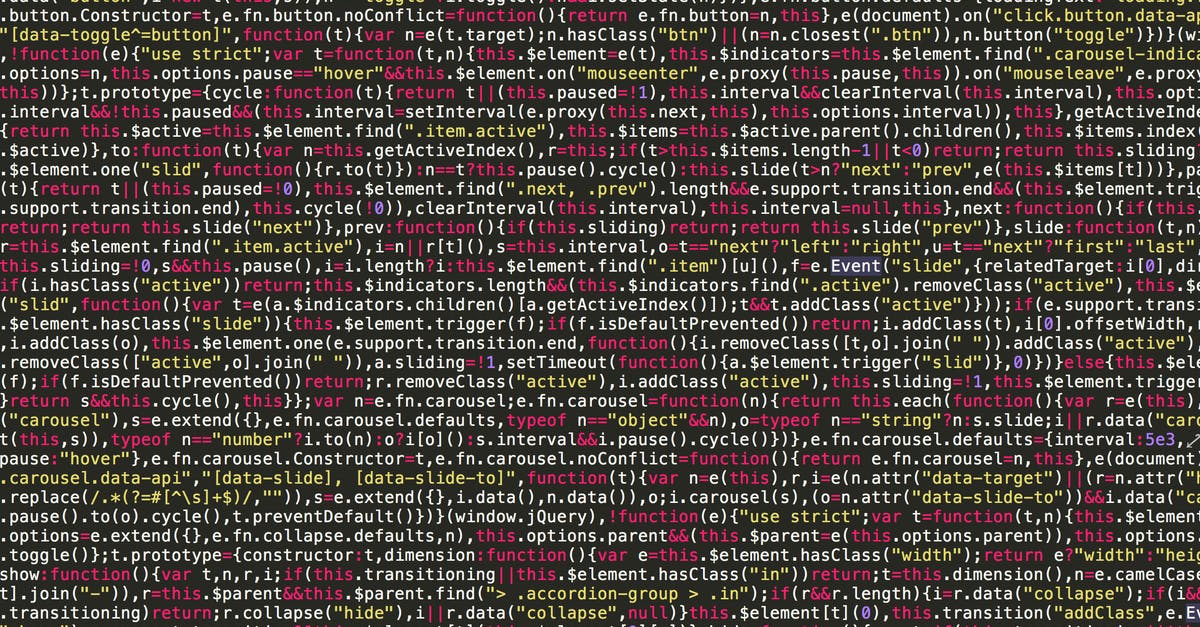About Sophie's background in The Da Vinci Code

I was trying to understand the movie The Da Vinci Code. It shows that Sophie Neveu is the last descendant of Jesus Christ.
I am trying to understand how after 2000+ years later there can be only one.
Also do the scientists/others have the DNA to match?
Best Answer
Short Answer:
Statistically, it is very improbable that Jesus Christ, or any other person who lived 2,000 years and at least fifty generations ago, would have one and only one living descendant at the time of the movie The Da Vinci Code (2006).
It is very probable that someone living 2,000 years ago would have either no living descendants at all, or else millions, tens of millions, hundreds of millions, and probably even billions, of living descendants at the present.
Having one, and only one, single living descendant 2,000 years later would be balancing on the knife's edge between having one's descendants die out totally and having more than one descendant at the time.
The odds would be quite high that someone living 2,000 years ago would not have any descendants living today.
The odds wold be quite high that someone living 2,000 years ago would have millions and millions of descendants today.
But i suspect that the odds that someone living 2,000 years ago would have one, and only one, descendant living today would be extremely tiny. I don't know how to calculate those odds but my guess is that they would be extremely small.
I do suggest one possible explanation for Sophie Neveu being the only descendant of Jesus at the end of my answer.
Long Answer:
When it comes to descendants, there are several different categories of persons.
There are people who never had any children and so don't have any descendants.
Imperator Caesar Marcus Opellius Antoninus Diadumenianus Augustus (208-218) is very probably a member of that category since he was killed age nine.
https://en.wikipedia.org/wiki/Diadumenian1
Julia Drusila (middle of 39-24 January 41) seems to certainly be a member of this category since she was killed age one shortly after her father, the emperor nicknamed "Caligula", was assassinated.
https://en.wikipedia.org/wiki/Julia_Drusilla_(daughter_of_Caligula)2
There are people who had at least one child but their descendants all died out within a few generations. I think that I read that the critical number of generations is about ten, so if someone's descendants survive and multimply for at least ten generations they are likely to continue "forever", more or less.
Abraham Lincoln is probably an example of a person in this category since it is believed that Robert Todd Lincoln Beckwith (1904-1985) was his last surviving descendant. Timothy Lincoln Beckwith, born 1968, is possibly, but probably not, a son of Robert Todd Lincoln Beckwith.
https://en.wikipedia.org/wiki/Robert_Todd_Lincoln_Beckwith3
King Martin I of Aragon (1356-1410) had four children. But only his son Martin I (c.1374/76-1409) King of Sicily, had any legitimate children children, and they all died before their father King Martin I of Sicily, who in turned died before his father King Martin I of Aragon, who thus inherited Sicily and became King Martin II of Sicily. So when King Martin I of Aragon & II of Sicily died he had no living legitimate descendants, and his cousin inherited Aragon and Sicily.
https://en.wikipedia.org/wiki/Martin_of_Aragon4
https://en.wikipedia.org/wiki/Martin_I_of_Sicily5
king Martin I of Sicily was survived by illegitimate children who had no claim to the throne.
Fadrique died in 1438 without children.
Violente de aragon (d. by 1428) married twice. And by her first marriage she seems to have descendants down to the present, her present Heir being Leoncio Alonso Gonzalez de Gregorio, 22nd Duke of Medina Sidonia.
https://en.wikipedia.org/wiki/Martin_I_of_Sicily5
https://en.wikipedia.org/wiki/Leoncio_Alonso_Gonz%C3%A1lez_de_Gregorio,_22nd_Duke_of_Medina_Sidonia6
So it turns out that King Martin I of Sicily was not such a good example since he does still have living descendants.
King Henry II of England (1133-1189) had eight legitimate children plus some illegitimate children, and has many thousands, perhaps millions, of traceable descendants today. Henry II's oldest son William (1153-1156) died age 3 without any children. The next son Henry (1155-1183) was crowned co king of England in 1170. Henry the young king's only known child was William, who died aged 3 days in 1177. The next son Richard I (1157-1199) was king of England from 1189-1199. Richard was married but had no legitimate children. Richard also had an illegitimate son, Philip of Cognac, who might possibly have descendants to the present.
The next son Geoffrey (1158-1186) married the Duchess of Brittany and had children. Eleonore (1184?-1241) was imprisoned and childless. Arthur Duke of Brittany (1187-1203) was probably killed age 16 and thus has no known descendants.
The youngest legitimate son of King Henry II, King John (1166-1216) has many descendants to the present. The three legitimate daughters of Henry II, Matilda, Eleanor, and Joan, all have many traceable descendants at the present.
So, as far as it is known, William, Henry, and Geoffrey, sons of King Henry II, have no known descendants, while Richard I may or may not have descendants traceable to the Present, while King John and their three sisters have many descendants traceable to the present.
The Third category of persons is those whose descendants become so numerous that they will continue as long as there are humans. I have read somewhere that if someone's descendants continue to survive and multiply for ten generations they will probably continue as long as there are humans.
There are several categories of such "eternally surviving" families.
For example, there is a family where someone's agnatic or patrilineal (male only) descendants continue more or less forever, from father to son to grandson to great grandson to great great great grandson, and so on, generation after generation.
Since everyone has a father, everyone is a member of a patrilineal family going back generation after generation, century after century, millennia after millennia, back to the first humans and beyond for hundreds of millions of years at least.
It has been calculated that all humans share a most recent common patrilineal ancestor, called "Y-chromosomal Adam", estimated to have lived some time during the period of about 200,000 to 300,000 years ago.
https://en.wikipedia.org/wiki/Y-chromosomal_Adam7
Similarly, it is believed that all humans share a most recent common matrilineal (female descent only) ancestor, called "Mitochondial Eve", estimated to have lived sometime during the period of about 150,000 years ago.
https://en.wikipedia.org/wiki/Mitochondrial_Eve8
"Y-chromosomal Adam" wasn't the only man living in his time. Thousands of other men where alive then and many of them also have descendants down to the present, but none of them have present day descendants in the purely agnatic or patrilineal line.
"Mitochondial Eve" wasn't the only woman living in her time. Thousands of other women where alive then and many of them also have descendants down to the present, but none of them have present day descendants in the purely matrilineal line.
The third and most common type of ancestor with "perpetual descendants" is one who doesn't have pure patrilienal or pure matrilineal descendants anymore but does have mixed line descendants. It is very common for someone's pure father to son to grandson etc. descendants, or their pure mother to daughter to granddaughter, etc. descendants to die out after some number of generations, but since someone's mixed descendants are many times more numerous they are many times more likely to survive.
I know that you, the reader, have a mother's father's mother's mother's father's mother's father's fathers' father, for example, because each of you ancestors needed both a mother and a father to be born. And similarly I know that you must have a father's mother's father's mother's father's mother's father's mother. And every other combination of paternal and maternal ancestors you could think of, no matter how many tens, hundreds, or thousands of generations back.
And you, like every other living person, have one ancestor in the pure patrilineal line who lived 2,000 years ago, and one person in the pure matrilineal line who lived 2,000 years ago, as well as millions of ancestors in mixed lines who lived 2,000 years ago.
So if someone who lived two thousand years ago has descendants to the present, they might possibly have pure patrilineal (male only) descendants at the present (after all, some men who lived 2,000 years ago and their wives must have patrilineal descendants to the present) and/or pure matrilineal (female only) descendants at the present (after all, some women who live 2,000 years ago and their husbands must have matrilineal descendants to the present).
But whether or not they have any pure patrilineal or pure matrilineal descendants at the present, they will have many thousands and millions of descendants in mixed male and female lines of descent.
It has been calculated that - unless someone doesn't have any children, or unless they have children but their descendants die out in the first few generations - someone's descendants are likely to increase in number slowly generation by generation, until eventually their descendants include every living human, and from that moment onward all humans will be descended from them (as well as also being descended from thousands and millions of other people alive in their lifetimes, of course).
Far enough back in time, every person then living is either the ancestor of nobody alive today or else of everybody alive today. Far enough in the future, everyone alive will be descended from every human alive today except for those humans alive today who won't have any descendants in that future time.
In biology and genealogy, the most recent common ancestor (MRCA, also last common ancestor (LCA), or concestor)[note 1] of any set of organisms is the most recent individual from which all the organisms from such set are directly descended. The term is also used in reference to the ancestry of groups of genes (haplotypes) rather than organisms.
The age of the MRCA of all living humans is unknown. It is necessarily younger than the age of either the matrilinear or the patrilinear MRCA, both of which have an estimated age of between roughly 100,000 and 200,000 years ago.[13]
A mathematical, but non-genealogical study by mathematicians Joseph T. Chang, Douglas Rohde and Steve Olson calculated that the MRCA lived remarkably recently, possibly as recently as 300 BCE. This model took into account that people do not truly mate randomly, but that, particularly in the past, people almost always mated with people who lived nearby, and usually with people who lived in their own town or village. It would have been especially rare to mate with somebody who lived in another country. However, Chang et al found that a rare person who mates with a person far away will in time connect the worldwide family tree, and that no population is truly completely isolated.[note 4]
The MRCA of all humans almost certainly lived in East Asia, which would have given them key access to extremely isolated populations in Australia and the Americas. Possible locations for the MRCA include places such as the Chuckchi and Kamchatka Peninsulas that are close to Alaska, places such as Indonesia and Malaysia that are close to Australia or a place such as Taiwan or Japan that is more intermediate to Australia and the Americas. European colonization of the Americas and Australia was found by Chang to be too recent to have had a substantial impact on the age of the MRCA. In fact, if the Americas and Australia had never been discovered, the MRCA would only be about 2.3% further back in the past than it is.[16] [17]
Note that the age of the MRCA of a population does not correspond to a population bottleneck, let alone a "first couple". It rather reflects the presence of a single individual with high reproductive success in the past, whose genetic contribution has become pervasive throughout the population over time. It is also incorrect to assume that the MRCA passed all, or indeed any, genetic information to every living person. Through sexual reproduction, an ancestor passes half of his or her genes to each descendant in the next generation; after more than 32 generations the contribution of a single ancestor would be on the order of 2?32, a number proportional to less than a single basepair within the human genome.[18][14]
https://en.wikipedia.org/wiki/Most_recent_common_ancestor#TMRCA_of_all_living_humans9
So if someone who lived 2,000 years ago has descendants in the present, they are likely to number in the millions or the billions, and that person of 2,000 years ago is well on their way to eventually becoming the Most Recent Common Ancestor of all humans sometime a few centuries or millennia in the future.
Since everyone has two parents, and every parent had two parents, the number of a person's ancestors doubles in each generation. Thus a person would have 1,024 ancestors in the generation 10 generations back, and 1,048,576 ancestors in the generation 20 generations back, and and 1,073,741,824 ancestors in the generation 30 generations back, and over a trillion ancestors 40 generations back, and over a quadrillion ancestors 50 generations back, and so on. Ten generations ago would be about 200 to 400 years, twenty generations ago would be about 400 to 800 years, thirty generations ago would be about 600 to 1,200 years, forty generations ago would be about 800 to 1,600 years ago, fifty generations would be about 1,000 to 2,000 years ago, and so on.
So according to these calculations anyone living today should have at least a quadrillion ancestors living 2,000 years ago, when the total human population was only about 150 million to 330 million people. Thus a person living today seems to have millions of times as many positions for ancestors living 2,000 years ago as there were people living 2,000 years ago.
And that is because a person living today would be descended from most of their ancestors living 2,000 years ago many different times. One might be descended from some ancestors 2,000 years ago 15 times, others 54 times, others 457 times, others 1,621 times, others 12,843 times, others 2,829,756 times, others 4,861,786,465 times, and so on and so on.
And it seems to me that estimating that the number of descendants per generation might also double every generation as a mathematical average is fairly reasonable. During periods when the world population changes only slightly, each couple should have an average of two children who reproduce and have an average of two children who reproduce and have an average of two children who reproduce, and so on and so on, in addition to the children in each generation who don't reproduce. At that rate the population would remain almost static and unchanging.
And with the descendants of a person living 2,000 years ago doubling every generation, by now they should have at least a quadrillion descendants, millions of times the actual world population. And again the total number of persons in each generation would be reduced by descendants marrying other descendants they were related to many times over.
In the Worldbuilding Stack Exchange a similar question was asked:
https://worldbuilding.stackexchange.com/questions/79629/how-can-i-make-sure-there-is-only-one-direct-descendent-over-a-thousand-years10
And the TV Tropes site has a Trope:
https://tvtropes.org/pmwiki/pmwiki.php/Main/SingleLineOfDescent11
A POSSIBLE EXPLANATION:
What if Sophie isn't the only descendant of Jesus but the only known one?
it would be extremely improbably for Sophie to be the only actual descendant of Jesus after 2,000 years.
But on the other hand, it is quite plausible that Sophie might be the only person in the present who could trace their ancestry to Jesus. What is implausible with that is the idea that anyone alive today could reliably trace their ancestry to anyone alive 2,000 years ago, not that Sophie might be only person with ancestry traceable back 2,000 years.
I am something of an expert, at least compared to most people, on royal genealogy, and I can honestly saw that I don't know if anyone can trace their ancestry to someone who lived 2,000 years.
And saying that I don't know certainly saves a lot of discussion. If you think that this discussion is long now, it would be a lot longer if I discussed some of the possible 2,000 year pedigrees.
But if Sophie's family is considered really, really sacred and important and divine, some secret group might have been keeping the family genealogy recorded for 2,000 years. But it would be too hard to keep track of very single descendant of Jesus Christ. If a secret society keeps track of the main heir of Jesus Christ (according to the succession rule they use) and many of their closest relatives, they would often lose track of people more distantly related to the main heir - like the third cousins or the fourth cousins or more distant relatives.
And so today the hypothetical secret society might have records of only a few hundred or a few thousand descendants of Jesus, who are descended from a heir of Jesus who lived only a few centuries ago, and not keep track of millions and millions of more distantly related descendants of Jesus.
But that would mean that there would be hundreds or thousands of other known descendants of Jesus beside Sophie, in addition to the millions of unknown ones. How could their numbers be reduced to only one? Perhaps there has been a series of accidents, diseases, murders, and other forms of bad luck that have greatly reduced the numbers of descendants of Jesus. Maybe there is another secret society that is constantly tracking down and assassinating the heirs and descendants of Jesus, pruning the Jesus family tree, until Sophie is the only one surviving at the time of the movie.
So the known members of the Jesus family - a small subset of the millions of unknown descendants of Jesus - being the victims of a secret society dedicated to tracking down and exterminating them would be one possible explanation for Sophie Neveu being the only known descendant of Jesus.
Pictures about "About Sophie's background in The Da Vinci Code"



Is Sophie descendant of Jesus in The Da Vinci Code?
Sophie finds out at the end of the book that she is a descendant of the Merovingians, and a living descendant of the historical Jesus.Is Sophie the Holy Grail in The Da Vinci Code?
Summary: Chapter 56 Langdon explains that the Holy Grail is a woman. He shows Sophie the ancient symbol for male and female.Keaton Henson - About Sophie
Sources: Stack Exchange - This article follows the attribution requirements of Stack Exchange and is licensed under CC BY-SA 3.0.
Images: Markus Spiske, Sabrina Gelbart, Markus Spiske, Maxime Francis
